3D printing could be a household thing in the near future. No doubt you have heard about 3D printing more frequently these days. The technology is considered a catalyst for another industrial revolution. The days when 3D printing will be used for mass productions in the manufacturing sector may not be far away. 3D printing, which has been in the industry market since the late 1980s previously more popular by the term Additive Printing, is destined to leap beyond modeling and prototyping applications.
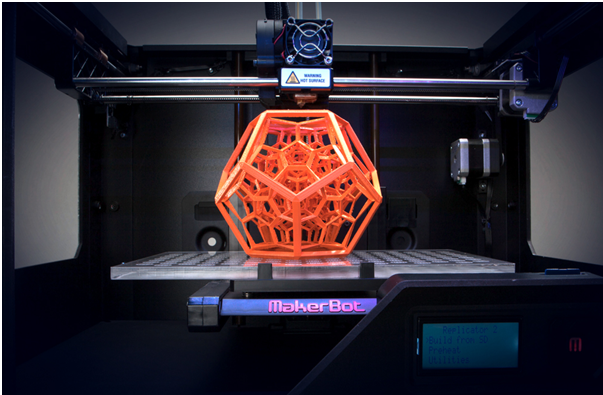
Figure 1: MakerBot 3D printer for rapid prototyping
So what exactly is 3D printing or additive printing? This is an industrial process of manufacturing three-dimensional solid objects from a digital file. A product designer or engineer creates a 3D model of a product in CAD software and 3D printers print them layer by layer, thus creating a real three-dimensional object. The entire process, from CAD modeling to printing, is digital, free-form and computer-controlled. This may soon be a common manufacturing process and real products will be manufactured just by feeding 3D CAD models to new generation 3D printers in the near future.
How does 3D printing work?
At first glance, this technology can hypnotize anyone and we can wonder how a real object is created in the air. Before anyone thinks this is magical, let's do a little reverse engineering on this technology.
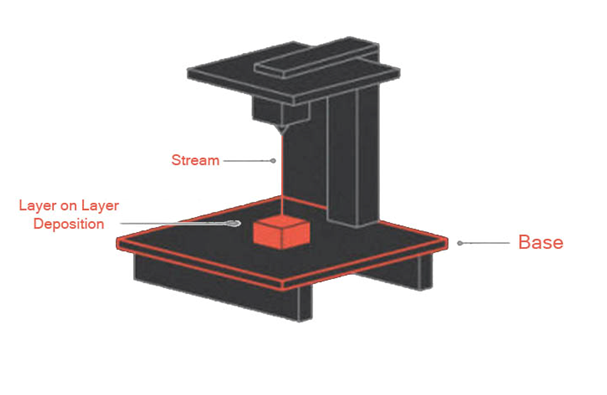
Figure 2: Working 3D printer
3D printing is a digital process. 3D models of any object in the form of STL (stereolithography) or OBJ (object) files are digital files created in CAD software.
Printing is done layer by layer from bottom to top on a base where each layer in the form of a digital code is sliced from the STL or OBJ file. Here, each layer is actually a deposition of manufacturing material onto the base in a digitally defined and computer-controlled manner. The digital code of the STL or OBJ file determines where the manufacturing material will be deposited within a layer and in what quantity and proportion. One can imagine each layer as a 2D plane where the adhesive material used to make the object is deposited in a specific amount at specific points on the two-dimensional plane and solidifies on instantaneous cooling, just as pixels are aggregated to form a 2D image in a digital display.
The complete 3D object is created by printing multiple layers on top one after the other.
Printing is carried out using additive materials so that each layer cements itself with the successive layer.
Therefore, a layer-by-layer deposition of additive material in a digitally controlled manner creates a real 3D object.
Since the object is created from a digital file, the shape, size and design of the object can be controlled, offering immense scalability.
If it has existed since the 1980s, why isn't it a common industrial phenomenon yet?
The whole concept of 3D printing looks impressive. Of course, it can supernaturally reduce the production costs of industries. From small-scale industries to large production centers, everyone should have adopted additive printing and saved a fortune. Still, it's not a common manufacturing process. There are three main reasons behind this.
3D printers are slow! yes, they create real 3D objects. Even so, a 3D printer takes hours to manufacture a single prototype or item. The slow operating speeds of current 3D printers restrict their application to modeling and prototyping. An increase in the operational speeds of 3D printers in the future could open up their application in the assembly lines of manufacturing units.

Prototypes or objects created using current 3D printers have mechanical defects. The printing process is not error-free. Printing accuracy depends on the accuracy of the STL or OBJ files and the 3D printer software settings. Furthermore, current 3D printers have limited control over the operating temperature of the environment where the material is deposited and solidified on the base. Obviously, this is another hurdle in deploying 3D printers in product manufacturing.
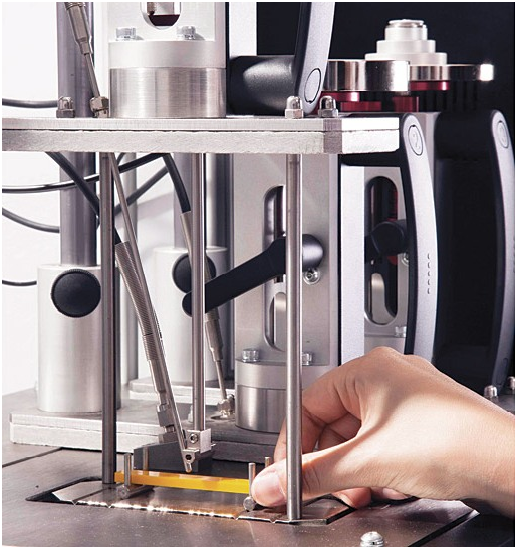
Material choices are currently limited to plastics and actual products are not made from plastics alone. An innovation in additive materials used for 3D printing could truly expand the technology's applications. Currently, only plastics are used for 3D printing because it is only possible to mold plastics and similar synthetic materials with limited control over the temperature of the molding environment. Other materials have very high melting points or, if they have lower melting points, take a long time to cool after deposition on the base.
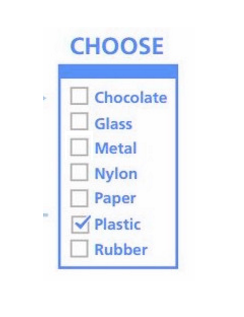
Figure 3: 3D printing materials
Why should you be interested in 3D printing?
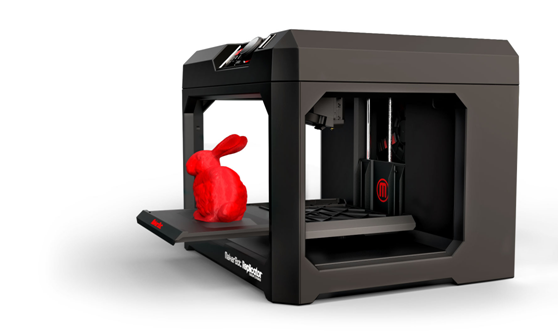
Figure 4: MakerBot 3D printer for rapid prototyping
3D Printing is still widely used in product modeling and prototyping. If you are looking for a career in product design and engineering, you should be aware of all the changes and innovations that 3D printing is taking place. Despite mechanical errors and slow operating speeds, 3D printing is a great tool for modeling, prototyping, and testing real product designs. Large companies and manufacturers use technology to model their products, creating new prototypes and testing these prototypes for their next products in real life. Even if someone is an independent innovator or technocrat, technology can be extremely useful for him/her. The cost of having a 3D printer has been greatly reduced and one can easily get a low-cost 3D printer for the laboratory if one is willing to tweak the mechanical design of some possible future products.
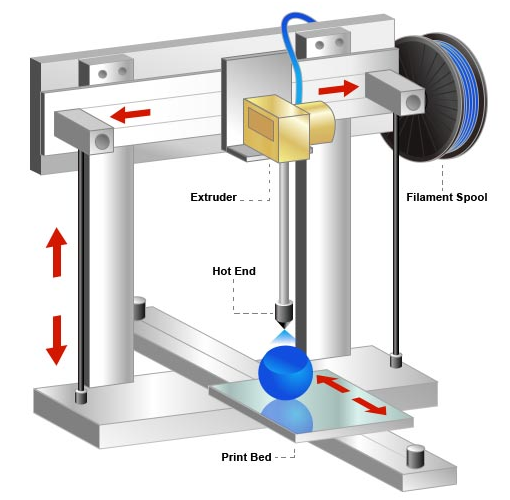
Figure 5: Material extrusion 3D printing technology
You can even contribute to technology by creating your own 3D printer. Many college students and innovators have successfully strived to create better 3D printers. Anyone can probably also build a futuristic or hobbyist 3D printer in an attempt to overcome the technology's current obstacles and limitations.
There are three main components of the technology –
1. 3D CAD Modeling
2. Slicing and Printer Settings
3. Physical Print
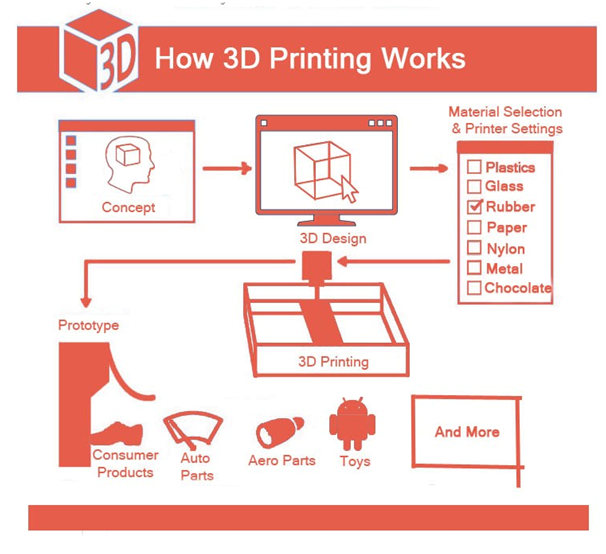
Figure 6: How 3D printing works
If someone is interested in product design and engineering, 3D CAD modeling and slicing are the aspects of technology we should be interested in. One can get a low-cost 3D printer and start modeling and adjusting the printer settings to print a design. The CAD modeling part involves creating a 3D design in software like AutoCAD, Blender or any other and saving the design to an STL or OBJ file. STL or OBJ files are converted to G codes. G codes are the digital codes that a 3D printer can interpret to print the object. This process is called Slicing. All printer settings are also determined at this stage. The most common software used for slicing is Cura. Another good thing is that Cura is free and open source. So all one needs to get started with 3D printing is CAD software, Cura and a 3D printer that can be purchased as per the budget.
And why not, anyone can also try to make a do-it-yourself 3D printer. This is where you will need to take a step forward and learn how physical printing is made. There is no single way to perform 3D printing. Many innovators have tried different processes to create a better printer and the ventures are still ongoing. Since 3D printing was recognized as a standard process in modeling and prototyping by the industry, in 2010 the “ASTM F42 – Additive Manufacturing” group of the American Society for Testing and Materials (ASTM) recognized seven categories of additive manufacturing.
1. Material extrusion (this is the most common 3D printing method)
2. Vat photopolymerization
3. Blasting of binding
4. Powder bed fusion
5. Directed energy deposition
6. Blasting of materials
7. Foil Lamination
These are the recognized standard methods of 3D printing. Anyone willing to purchase a DIY 3D printer needs to learn about these recognized standard 3D printing methods. Later, experiments can be done with different manufacturing materials. One can try to change environmental factors, temperature controls, and other manufacturing factors to create a better three-dimensional printing device.
How far can you go with 3D printing?
Definitely, additive printing could soon find application in regular manufacturing. From the medical industry (bioprinting is a form of 3D printing used for medicines), automotive and aerospace to construction, textile, defense manufacturing and robotics, 3D printing is currently used in a wide range of industries to pre-test products or parts. projects.
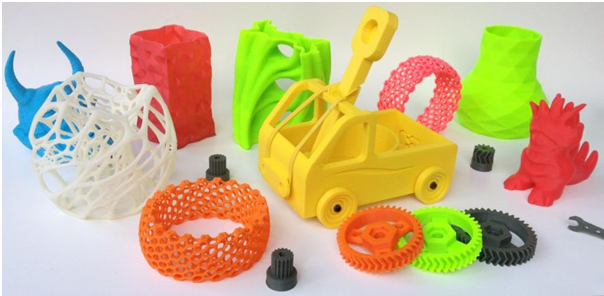
Figure 7: 3D Printed Models and Prototypes
Learning and getting your hands dirty with 3D modeling software in an attempt to create random or carefully thought out prototype designs can possibly launch a career in the industrial design, product prototyping, or conceptual design engineering sectors. Even getting an inexpensive 3D printer can allow you to test a prototype that could, even if it was never thought of, be an impressive futuristic product. And why not take the initiative to build a DIY 3D printer? Perhaps the new design will become the next big thing in the thriving 3D printing industry.
3D printing will definitely be the face of the next industrial revolution.

